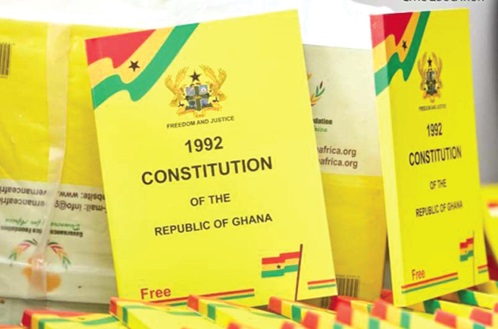As per the United States Constitution, an office holder like the President can be impeached and removed from office on grounds of “treason, bribery or other high crimes and misdemeanours.”
I recall watching a news analysis show during a presidential impeachment process where a panellist was asked, “What are high crimes and misdemeanours?” And he answered, “It is whatever a majority of the House of Representatives say it is.”
This brings me to the case of Ghana and the current petition to remove the Chief Justice from office.
As the Ghana constitution states, “A Justice of the Superior Court or a Chairman of a Regional Tribunal shall not be removed from office except for stated misbehaviour or incompetence or on grounds of inability to perform the functions of his office arising from infirmity of body or mind (Art.146, 1).
I think it is fair to say that the “inability to perform the functions of his office arising from infirmity of body or mind” does not need much clarity.
Where the contention in Ghana’s case may arise is the part of the clause that says, “stated misbehaviour or incompetence”.
What, specifically, constitutes stated misbehaviour or incompetence?
And that is where, in addition to the safeguards built into the process, there is a need to rethink Article 146(6).
The Key Issues
A president has no control over when and how many petitions will be presented with respect to the removal of a Chief Justice.
When a president receives such a petition, the Constitution is clear on what needs to be done.
I have often wondered whether a president is expected to act as a gatekeeper or conveyor belt.
In a gatekeeper role, a president weighs the petition and determines whether it merits triggering Article 146(6).
In a conveyor belt role, upon receipt of the petition, Article 146(6) is automatically triggered and, therefore, to try and play a gatekeeper role will be a violation of the constitution.
Both approaches make the process vulnerable to partisan politics, even in the face of the safeguards built into the system.
If a president is allowed to play a gatekeeper role, they may be reluctant to trigger 146(6) against a person they may have appointed, but eager when the opposite is true.
If a president plays a conveyor-belt role, they may be eager to embrace the automatic trigger reading of 146(6) if a petition is against a person they may not have appointed, but reluctant when the opposite is true.
It is exactly why the role of a president, in my view, needs clarification.
Unless a petitioner makes the contents of their petition public or by some inadvertent administrative error it is leaked, citizens will never know the grounds upon which a petition is filed.
In addition, Article 146(8), which prescribes how proceedings unfold once 146(6) is triggered, creates, in my view, a highly secretive process.
It appears the constitution calls upon citizens to trust the actors, process and the inbuilt safeguards when there is a petition to remove a Chief Justice.
For example, because a president must consult with the Council of State, citizens can rest assured that triggering 146(6) is not just the decision of a single person.
Or because a committee weighs the evidence and offers a Chief Justice opportunities to defend themselves, the citizens can rest assured of a fair process?
But is it not worrying that if such a process leads to the ultimate sanction – removal from office–as citizens, we will never know the grounds upon which it happened except to be referred to Article 146(1)?
The process, as it unfolds, allows a president, acting on the advice of the Council of State, to suspend a Chief Justice (Article 146, 10a).
Again, the safeguard mechanism is the role of the Council of State. But the worrying point is the same as above – citizens are totally left in the dark in a process that can lead to the suspension of the highest-ranking officer of the judiciary.
Correcting the defects of Article 146(6)
The core reform needed to correct this defect is more transparency. It may require providing the public with an abridged version of the petition, even if a petitioner’s identity must be kept secret.
In addition, the response of a Chief Justice must be made a part of the public record.
It may not hurt to make the advice given by the Council of State, as well as the findings of the committee and their recommendations public as well.
The gravity of removing a Chief Justice from office is such that it must be done in a way that builds confidence in institutions.
One way to do that is to make the process more transparent.
Over to you, Constitution Review Committee.
The writer is the Project Director, Democracy Project.

